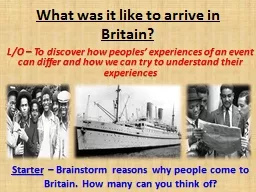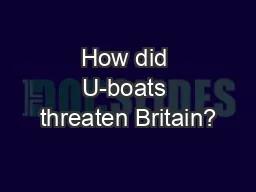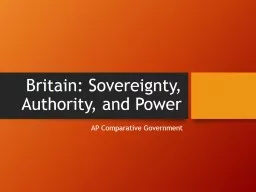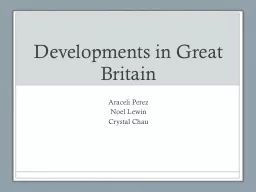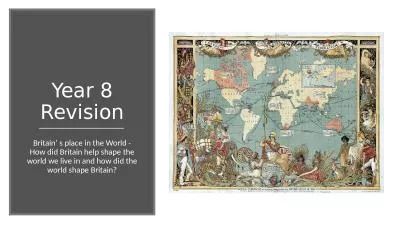PPT-What was it like to arrive in Britain?
Author : natalia-silvester | Published Date : 2015-09-18
LO To discover how peoples experiences of an event can differ and how we can try to understand their experiences Starter Brainstorm reasons why people come to
Presentation Embed Code
Download Presentation
Download Presentation The PPT/PDF document "What was it like to arrive in Britain?" is the property of its rightful owner. Permission is granted to download and print the materials on this website for personal, non-commercial use only, and to display it on your personal computer provided you do not modify the materials and that you retain all copyright notices contained in the materials. By downloading content from our website, you accept the terms of this agreement.
What was it like to arrive in Britain?: Transcript
Download Rules Of Document
"What was it like to arrive in Britain?"The content belongs to its owner. You may download and print it for personal use, without modification, and keep all copyright notices. By downloading, you agree to these terms.
Related Documents

